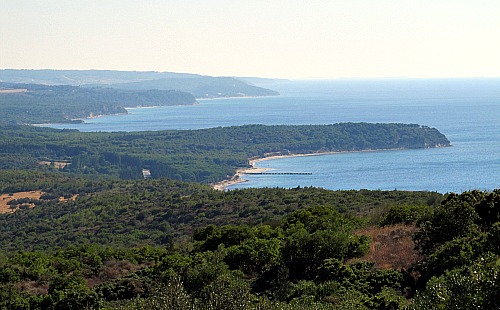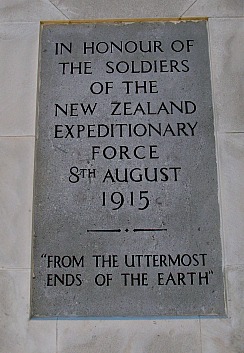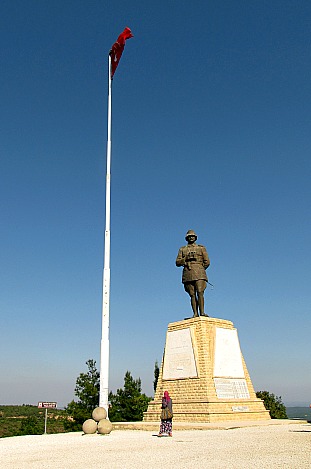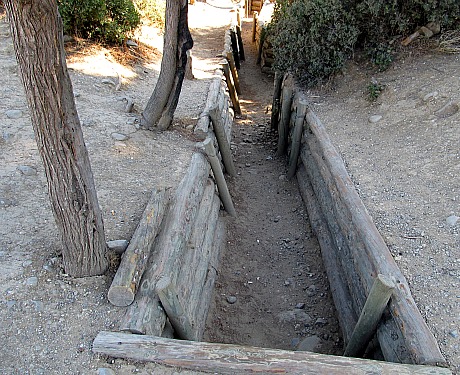
Back on the bus, we meandered along a high mountain road, the Marmara Sea far below. Marmara means double sea, which makes sense to me since mare means “sea” in Italian: marmara then would be “seasea”: double sea.
Alp pointed out the Island of Marmara in the distance. This island consists of great white marble deposits. Marble has been quarried here for 1,000 years and continues to this day in the numerous quarries that still exist. Although the marble found on the island is not good for carving statues, it is good for building; in fact, much of the marble used to build the Hagia Sofia came from these same quarries.

Alp shows us a linden tree
As we passed through a thickly forested area, Alp pointed out several linden trees, a major economy in Turkey. Turks drink lots of linden tea, believing it to have therapeutic properties. So that’s exactly what we did next: stopped for linden tea in the village of Uçmakdere.

A village home tucked into the hillside
Our big shiny bus looked out of place in this remote village tucked alongside the curving road high above the sea. We poured out, hovering near its incongruous hulk to wait for our leader to lead us. I glanced over at a café where a few local men sat outside on chairs.

Following Alp into a small courtyard of the café, we spread ourselves among the few tables and benches. One of the local men joined us, sipping linden tea and chatting as if we were old friends.

We all tried the linden tea.

A few old men sat nearby, playing dominoes and socializing.

These pretty gourds were hanging from a tree growing at the edge of the little cafe courtyard
After tea, I walked around a bit. Coming upon what appeared to be a fountain of some kind, I went up for a closer look. Two large metal jugs sat inside it, probably to keep them cool.

Opposite the fountain, two children were playing. A plump, kerchiefed woman stood nearby, keeping a watchful eye. One of the kids pretended to be singing into a microphone, giggling when I took a picture.

They had a little stand with packages of something they were selling, maybe dried herbs of some kind. Alp told us there are only 216 people in this small village, two of them in primary school. Undoubtedly, these were the two.


Every town and village has its mosque. I thought the minaret in Uçmakdere was particularly pretty.
Nearby, a bust of Mustafa Kemal Ataturk glinted in the bright sun. No Turkish town, large or small, is without its shrine to this beloved man who led the Turks in their war of independence. Ataturk literally means “father of the Turks,” but he is more conceptually considered the great leader or “grand Turk.”

Ataturk. He followed us all over Turkey. Or maybe we followed him...
From the ashes of the Ottoman Empire, he established the Turkish Republic, the modern country of today. His list of accomplishments is impressive: he separated religion and state to create a secular nation, abolished polygamy, emancipated women, and a litany of other progressive actions that ultimately aligned Turkey with the western world. The Turks revere him, almost as a god.
On our way back towards the bus, a man sitting side-saddle on a horse plodded past and grinned at us with a toothless smile, exactly what you’d imagine seeing in a remote Turkish village.

Later today, we’d be visiting a site that played prominently in Ataturk’s ascendancy. But first, it was time for wine!





















































